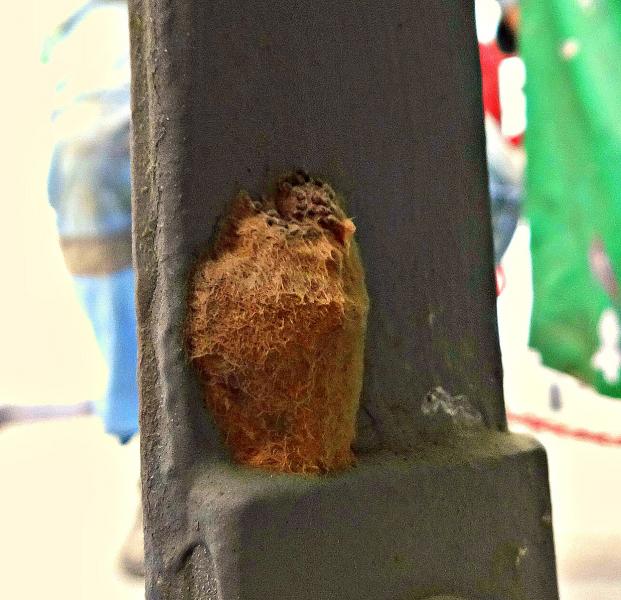CBP Intercepts Asian Gypsy Moth at Port of Honolulu
First Time Discovery of Voracious Agriculture Pest in Hawaii
U.S. Customs and Border Protection agriculture specialists (CBPAS) stationed at Honolulu seaport recently intercepted 11 Asian Gypsy Moth (AGM) egg masses on a ship from Taiwan. Each of these masses can contain hundreds of eggs of this devastating plant pest. The interception marks the first time the destructive pest’s eggs  have been discovered in the islands.
have been discovered in the islands.
“CBP’s primary mission is protecting our nation’s borders from anything that could do us harm, no matter what form it takes,” said Brian J. Humphrey, CBP’s Director of Field Operations in San Francisco. “The introduction of AGM could have devastating effects on our agriculture industry.”
In late September, CBPAS inspected the foreign flag merchant vessel for AGM. During the deck sweep, the agriculture specialists discovered 11 AGM egg masses on various surfaces of the vessel superstructure. The egg masses were carefully scraped off and the areas treated. After a further intensive inspection, CBP determined that the AGM risk had been mitigated and the vessel was permitted to process the cargo.
CBP has taken a strategic, proactive approach to combat this threat. AGM (Lymantria dispar) is a voracious pest that can eat the foliage of more than 600 different species of forest trees, shrubs, and other plants. This pest is of particular concern because AGM has the potential to spread quickly since the female moth can fly up to 25 miles. If established in the United States, AGM could decimate America’s forest resources and agriculture production.
